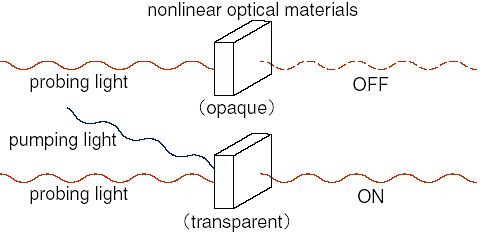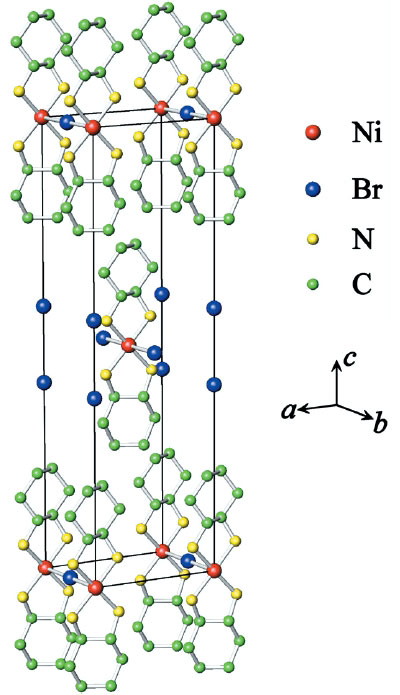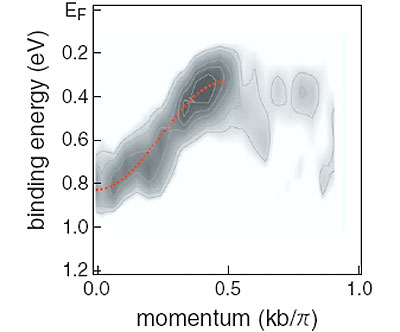Low-dimensional materials show peculiar properties due to their unique crystal and electronic structures. In particular, one-dimensional strongly correlated electron materials have attracted much attention in recent years since it has been discovered that some of them show very strong nonlinear optical (NLO) effects. Fig. 5-12 illustrates the switching of the probing light by the pumping light with NLO material. The transparency of the NLO materials can be controlled by the illumination of the pumping light, and switching or modulation of the probing light is possible. Therefore, these one-dimensional electron systems may become key materials for future optical technology. Materials with large NLO-effect properties have been strongly sought after.
Among these one-dimensional compounds, the one-dimensional halogen-bridged nickel compound [Ni(chxn)2Br]Br2 shows the largest known NLO effect. We have performed angle-resolved photoelectron spectroscopy (ARPES) experiments on this compound to understand the origin of its very large NLO effect. Fig. 5-13 shows the crystal structure of [Ni(chxn)2Br]Br2. The nickel (Ni) atoms with two cyclohexanediamine molecules and bromine (Br) atoms are arranged alternately on the b axis, and the one-dimensional electronic structure is formed in this direction. Angle-resolved photoelectron spectroscopy is an experimental method where ultraviolet light or X-rays are irradiated to the sample, and the resulting photoelectrons emitted from the sample are detected. By determining the emitted angle and the kinetic energy of the photoelectrons, the interrelation between the energy and the momentum of the electrons inside the sample, the dispersion relation can be determined. We have measured the ARPES spectra of this sample along the b axis. Fig. 5-14 shows the dispersion relation of the electrons in this sample. This dispersion relation is found to be much different from those in other one-dimensional electron systems. We have analyzed this configuration with a model calculation where the Ni and Br atoms are arranged alternately, and conclude that the large NLO originates from a large transfer energy of electrons between the Ni and Br atoms in this compound.
These results will be utilized for the development of the materials that have larger NLO effects.
|


